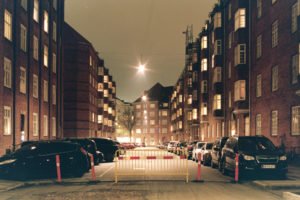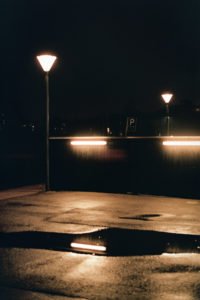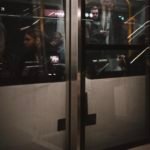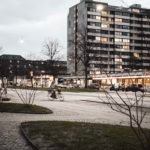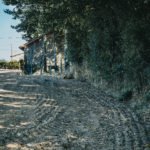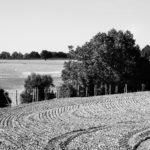Armed with tripod and trusty old OM10 I spent a cold evening in the streets around my home shooting long exposures. Portra 400 did well, yielding some nice colours and exposing consistently whether under- or over-exposed. I was impressed with the accuracy of the Lux light meter app on my iPhone – on all but a few exposures the metering was pretty spot on.
Author: Dan
-
Back at the tail end of 2017 we were awaiting the arrival of our duaghter and found ourselves, for the first time in many years, without a lot of travel on the agenda over the festive period. We filled our time with hygge & celebration, and walks around local forests including Hareskov and Dyrhavn. I enjoyed the opportunity afforded by the faltering sunlight to make a series of photos which captured the mood of a winter forest. Two years on, I look back at these photos and feel the way I did as I walked amongst those trees, bathing in the quiet ambiance of raindrops on foliage, and absorbing that mysterious, ancient woodland energy.
-
One reason I love the Olympus m43 cameras, specifically the EM5, is the size. I can carry this camera in my bag every day, and should I feel inspired by the light, my surroundings, or simply have some excess creative energy, I can pour that energy into photography without the pressure one feels when specifically dedicating time to the pursuit.
These photographs were made on a 20 minute commute on Copenhagen’s new M3 metro line on a recent rainy November evening. The colour grading is my own Lightroom CC preset, available soon in the store.
-
Many people today are talking about how uncomfortable they feel about their dependence on devices, and more specifically the content they consume via their devices. Whilst this theme is certainly well established, I have observed very few experimenting with ways of adapting to this trend in a positive manner.
What is interesting is how, in a market where devices are sold on the basis of how they can be depended upon to provide a solution to our needs (and they do), it is often an entirely different kind of dependency which emerges as the dominant factor in our relationship with our devices. Specifically we are using our devices to medicate boredom and anxiety, and later choosing feeds over friends once the dependency has been established. This is not a healthy dependency, in many circumstances probably as undesirable as the long term use of alcohol or recreational drugs for the treatment of these states of mind. Like drugs and alcohol it probably doesn’t feel like a problem until it is too late. But unlike drugs or alcohol, the consequences are less direct, more emergent.
Our devices have quietly inserted themselves into our lines of communication with friends and social circles, into the time and space which we spend with our friends, and thus into the fabric of our relationships. And they are so effective at entertaining, and at incentivising further consumption, that unassuming victims begin to choose, consciously or unconsciously, their devices over their relationships. Think of the husband on the sofa, scrolling through twitter rather than acknowledging his wife’s needs, or the teenage girl, one of many looking at each other only through the lens (literal or otherwise) of what might make a popular post on snapchat or instagram.
As our minds adapt to the growing strength of each hit, so the systems evolve new means to keep us engaged, and in a zero-sum game, our attention on people and relationships slips away, slowly at first, but the snowball is gaining momentum.
For me, the time has come to acknowledge this phenomenon and act. My children deserve my undivided attention, my wife deserves the best of me, and my relationships with wider family and social circles would benefit far more from a phone call than from a rushed WhatsApp message. And so I’m running an experiment. I will switch to a feature phone for a month or so. I’ve selected a device with enough features to ensure the impact on my ability to do my job is not impacted, but with enough compromises in user experience to be an undesirable channel through which to consume, regardless of its theoretical capabilities.
This experiment requires concessions, but I had in mind some capabilities which would help me strike the right balance between convenience and addictive consumption. On my list of considerations were:
- No qwerty keyboard – if I really need to type, I can take the time to pull out an ipad or laptop
- Small screen – if the phone happens to have a twitter app, let’s make sure it’s a crappy experience
- 4G with hotspot capabilities so I can continue to work remotely from my ipad
- Basic maps so I can navigate if I’m in a tough spot
- MP3 player and bluetooth – I can live without Twitter, but not without Bill Evans…
Some concerns I have going in to this experiment are around the ways in which a mobile phone has become so convenient for tasks which aren’t about consumption. For example, I use my phone to manage task lists, to write stubs of blog posts, to take and edit photos, to manage and respond to emails, to pay using Apple Pay, to manage bank accounts and make payments, to hire electric scooters, to study on Coursera or Memrise, to plan routes on public transport, to hire cars… The list of what I am likely to miss is endless, and that is part of the problem.
My hope is that, with a handy partner device (the ipad on which I am writing this post), I will be able to enjoy enough of the convenience of this long list of capabilities without the excessive convenience which so easily leads to a slip in to mindless consumption. Because it leaves me numb, burns my time and feeds my anxiety, and that ain’t good.
-
Copenhagen is developing a resilient neighbourhood in the north-eastern district of Østerbro. Climate resilience, particularly the challenges associated with heavy rainfall, is combined with a social objective to create valuable communal spaces which reinforce strong community.
The first adapted space in the area as part of this programme was Taasinge Plads, completed in 2014. It combines a multi-faceted rainwater management solution with a new piazza and elements of nature integrated with both the accessible space and the stormwater management ponds.
(more…) -
This quick sketch, from a spot on the junction between Bernstorffsgade and Vesterbrogade, features Axel Towers and the surrounding street scene. This is a busy intersection very close to Copenhagen’s main station and Tivoli, a popular tourist attraction.
(more…) -
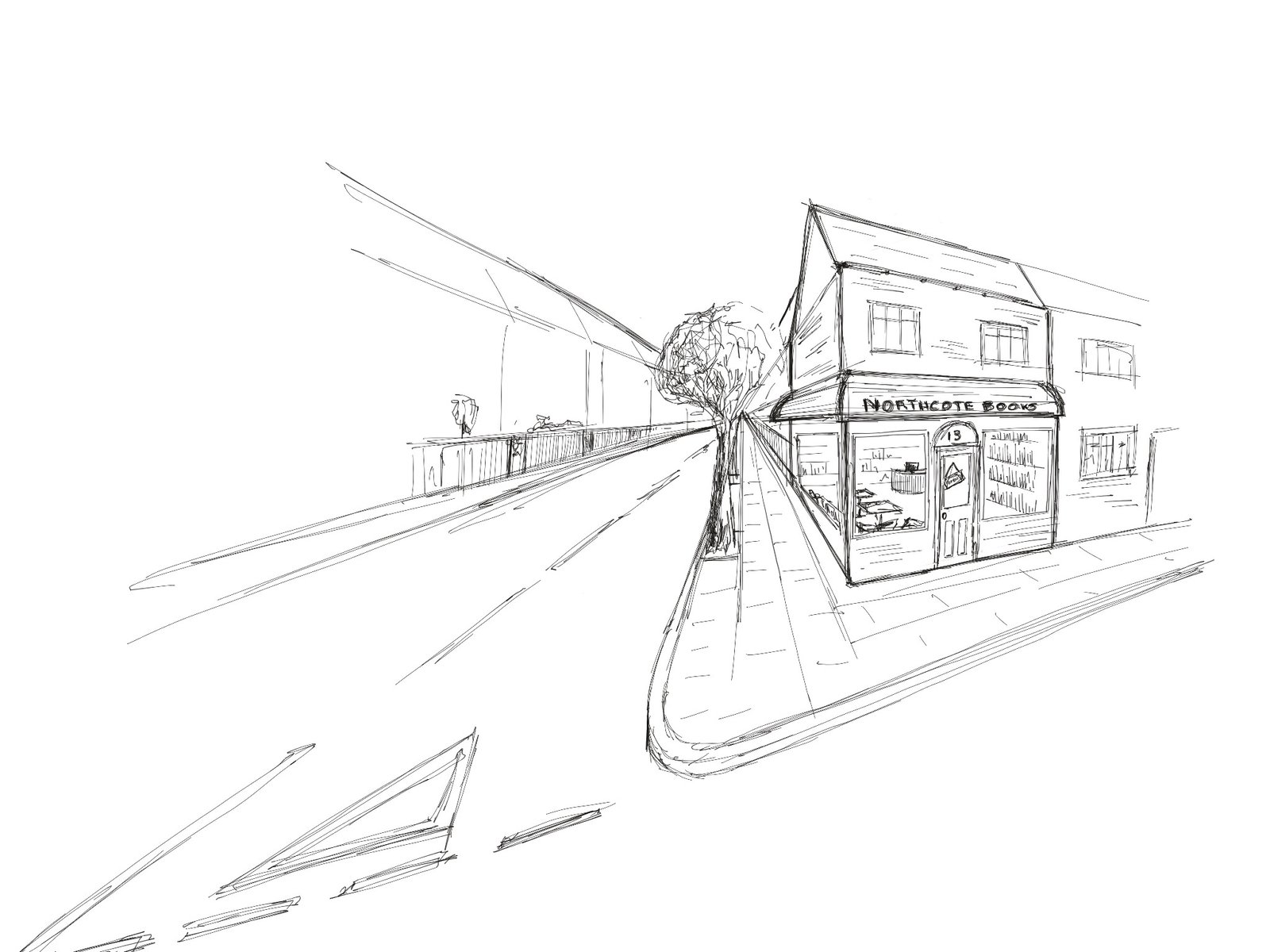
Several years ago I was very lucky to become involved in a local initiative in Clapham, London, to establish a community bookshop. The initiative was a response to the closing of the existing local bookshop along with the persistent threat of closure which haunted the local library. Our vision was one of community building, with shared ownership via community shares. We envisioned evening events, a catalyst for a local sharing economy, a safe space for socialising, studying, observing, contemplating. And we built significant momentum, with a committee formed of interested locals working together to identify opportunities to secure premises, grow local awareness, and establish the legal foundation for community ownership.
Unfortunately, the momentum slowed and was ultimately lost altogether when the most likely location for the shop, a new social development in the area, fell through. So, a couple of years on it is time to close down the website, but it will remain archived here at bookshop.danieleverard.com for those interested in reviewing and perhaps learning from the history of the project.
-
Be part of the Citified community! Join our slack workspace and help us get a dialog going about how cities can be better for people and better for the planet.
-
Almost every article, briefing, lecture or essay on matters of urbanisation seems to make reference to the extent of urbanisation in the world today and the expected urban population globally in the future. Often, such material specifically refers to the well established benchmark of the UN World Urbanization Prospects publication1.
So it is perhaps surprising to find that the level of standardisation of the urbanisation figures, or specifically the methodology used to derive them, is very low. In the case of the “official” UN figures, national methods are used and aggregated without a huge effort to ensure there is a degree of alignment between the various approaches.
This recent OECD paper2 goes some way to both understanding the deficiencies in existing metrics and in proposing alternatives which might provide a better baseline for understanding a) what “urban” really means in the context of measuring populations, and b) the methods which can be deployed to effectively measure on this basis.
An extensive review of approaches covers population density by area and by administrative designation, designation by infrastructure provision and finally rural employment. None is “correct”, but for a globally deployable methodology only the first makes sense. Several limitations of a naive approach must be overcome however.
The proposed methodology, a population grid with units of land designated as city, town, suburban or rural, overcomes some of the inconsistencies identified with the existing approaches. The authors address unit size when defining the grid, acknowledging that manipulation of the grid resolution will dramatically effect the output of a given survey. Density, as the primary factor in the assignment of categorisation to each cell, allows urban areas to be identified by applying additional rules about clusters of contiguous urban cells and the total population within these designated clusters.

Demonstrating the categorisation of land around Cork, Ireland. 3 Dealing with density variation
Ulaanbaatar, the capital of Mongolia, is a city with 1.4 million inhabitants. The area of the municipality is particularly big with 4,700 sq km. As a result, the density of this municipality is very low: less than 300 inhabitants per sq km. Purely relying on municipal densities would inevitably mean that Ulaanbaatar would be classified as rural.4
To overcome the issue illustrated by this example, specifically the designation of urban population in areas with low density, the authors proposed additional categories which allow low density urban clusters to be designated as such. This approach disambiguates such areas from, for example, sub-urban zone around a more densely populated urban centre. In selecting regions for analysis of the potential of experiments or initiatives which make an assumption of density, this additional granularity will enable significantly more accurate forecasting of efficacy.
It is clear that there remains work to be done to establish a recognised means of designating urban areas and differentiating between urban populations with materially different characteristics. However, in this paper I found answers to many of my own questions about the degree of urbanisation in the world today, and a rigorous analysis of the shortcomings of the data being both existing measures and the new proposal. In the conclusions set out in the paper, it is clear that the new method raised few surprises in the Americas, Europe and Oceania. However in Africa and Asia the findings demonstrate a clear discrepancy in the interpretation of “urban” which may, with better data, lead to a much higher measure of urban population today than previously thought.



